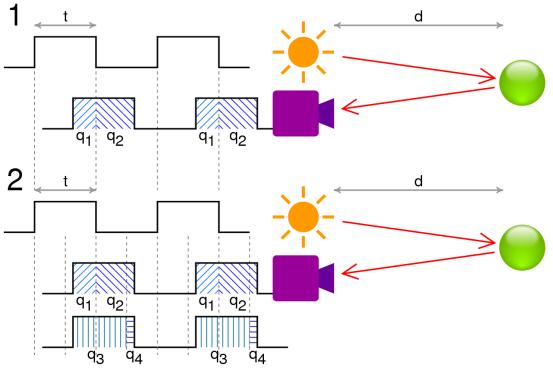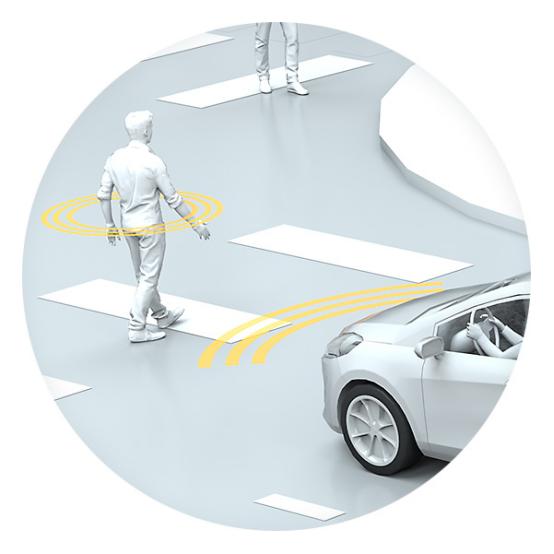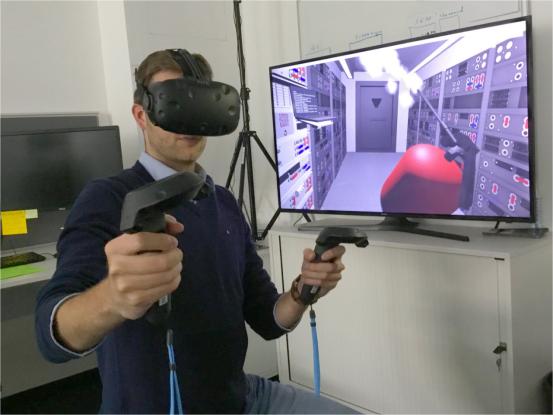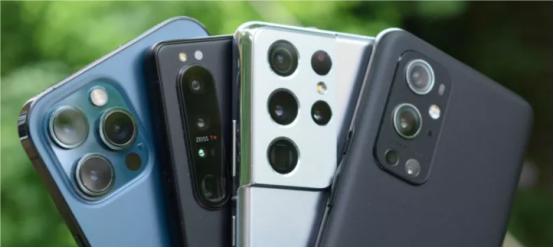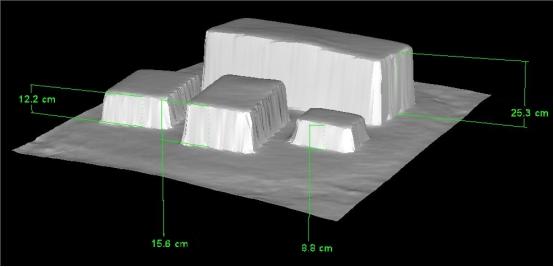一、What is time of flight cameras?
Time-of-flight (ToF) cameras are a type of depth-sensing technology that measures the distance between the camera and objects in the scene by using the time it takes for light to travel to the objects and back to the camera. They are commonly used in various applications such as augmented reality, robotics, 3D scanning, gesture recognition, and more.
ToF cameras work by emitting a light signal, typically infrared light, and measuring the time it takes for the signal to bounce back after hitting objects in the scene. This time measurement is then used to calculate the distance to the objects, creating a depth map or a 3D representation of the scene.
The time of flight cameras
Compared to other depth-sensing technologies like structured light or stereo vision, ToF cameras offer several advantages. They provide real-time depth information, have a relatively simple design, and can work in various lighting conditions. ToF cameras are also compact and can be integrated into smaller devices like smartphones, tablets, and wearable devices.
The applications of ToF cameras are diverse. In augmented reality, ToF cameras can accurately detect the depth of objects and improve the realism of virtual objects placed in the real world. In robotics, they enable robots to perceive their surroundings and navigate obstacles more effectively. In 3D scanning, ToF cameras can quickly capture the geometry of objects or environments for various purposes like virtual reality, gaming, or 3D printing. They are also used in biometric applications, such as facial recognition or hand gesture recognition.
二、Components of time of flight cameras
Time-of-flight (ToF) cameras consist of several key components that work together to enable depth sensing and distance measurement. The specific components may vary depending on the design and manufacturer, but here are the fundamental elements typically found in ToF camera systems:
Light Source:
ToF cameras use a light source to emit a light signal, usually in the form of infrared (IR) light. The light source can be an LED (Light-Emitting Diode) or a laser diode, depending on the camera’s design. The emitted light travels towards the objects in the scene.
Optics:
A lens gathers the reflected light and images the environment onto the image sensor (focal plane array). An optical band-pass filter only passes the light with the same wavelength as the illumination unit. This helps suppress non-pertinent light and reduce noise.
Image sensor:
This is the heart of the TOF camera. Each pixel measures the time the light has taken to travel from the illumination unit (laser or LED) to the object and back to the focal plane array.
Timing Circuitry:
To measure the time-of-flight accurately, the camera needs precise timing circuitry. This circuitry controls the emission of the light signal and detects the time it takes for the light to travel to the objects and return to the camera. It synchronizes the emission and detection processes to ensure accurate distance measurements.
Modulation:
Some ToF cameras incorporate modulation techniques to improve the accuracy and robustness of distance measurements. These cameras modulate the emitted light signal with a specific pattern or frequency. The modulation helps distinguish the emitted light from other ambient light sources and enhances the camera’s ability to differentiate between different objects in the scene.
Depth Calculation Algorithm:
To convert the time-of-flight measurements into depth information, ToF cameras utilize sophisticated algorithms. These algorithms analyze the timing data received from the photodetector and calculate the distance between the camera and the objects in the scene. The depth calculation algorithms often involve compensating for factors like light propagation speed, sensor response time, and ambient light interference.
Depth Data Output:
Once the depth calculation is performed, the ToF camera provides depth data output. This output can take the form of a depth map, a point cloud, or a 3D representation of the scene. The depth data can be used by applications and systems to enable various functionalities like object tracking, augmented reality, or robotic navigation.
It’s important to note that the specific implementation and components of ToF cameras can vary across different manufacturers and models. Advancements in technology may introduce additional features and enhancements to improve the performance and capabilities of ToF camera systems.
三、Applications
Automotive applications
Time-of-flight cameras are used in assistance and safety functions for advanced automotive applications such as active pedestrian safety, precrash detection and indoor applications like out-of-position (OOP) detection.
The application of ToF cameras
Human-machine interfaces and gaming
As time-of-flight cameras provide distance images in real time, it is easy to track movements of humans. This allows new interactions with consumer devices such as televisions. Another topic is to use this type of cameras to interact with games on video game consoles.The second-generation Kinect sensor originally included with the Xbox One console used a time-of-flight camera for its range imaging, enabling natural user interfaces and gaming applications using computer vision and gesture recognition techniques.
Creative and Intel also provide a similar type of interactive gesture time-of-flight camera for gaming, the Senz3D based on the DepthSense 325 camera of Softkinetic. Infineon and PMD Technologies enable tiny integrated 3D depth cameras for close-range gesture control of consumer devices like all-in-one PCs and laptops (Picco flexx and Picco monstar cameras).
The application of ToF cameras in games
Smartphone cameras
Several smartphones include time-of-flight cameras. These are mainly used to improve the quality of photos by providing the camera software with information about foreground and background. The first mobile phone to employ such technology was the LG G3, released in early 2014.
The application of ToF cameras in mobile phones
Measurement and machine vision
Other applications are measurement tasks, e.g. for the fill height in silos. In industrial machine vision, the time-of-flight camera helps to classify and locate objects for use by robots, such as items passing by on a conveyor. Door controls can distinguish easily between animals and humans reaching the door.
Robotics
Another use of these cameras is the field of robotics: Mobile robots can build up a map of their surroundings very quickly, enabling them to avoid obstacles or follow a leading person. As the distance calculation is simple, only little computational power is used. Since these cameras can also be used to measure distance, teams for FIRST Robotics Competition have been known to use the devices for autonomous routines.
Earth topography
ToF cameras have been used to obtain digital elevation models of the Earth’s surface topography,for studies in geomorphology.
The application of ToF cameras in geomorphology
Post time: Jul-19-2023

